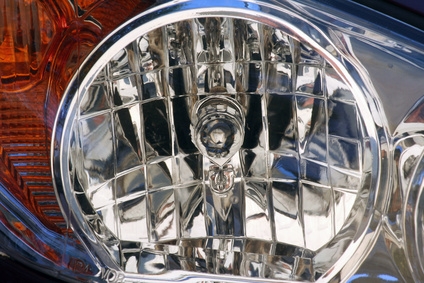
There are three main problems that can afflict your Chevrolet vehicle's headlights: an electrical connector that is loose, an old bulb that is burnt out and a fuse that is broken. Although the exact procedure to fix the issue differs between vehicles, the ideas are the same.
The electrical connectors of a headlight assembly are found at the rear of the assembly. Through the connectors, power is supplied. Often times, because of rough road conditions, the electrical connector may become loose. If this happens, it simply needs to be plugged in for the headlights to work again. Accessing the headlights differs between Chevrolet vehicles so you should consult your vehicle's owner's manual for how to reach the headlight assembly. The most common method involves opening the hood of your vehicle and removing a few screws atop the headlamp assembly. From there, you can access the assembly.
The most common headlight problem is a burnt-out bulb. The type of bulb differs between Chevrolet vehicles. Most vehicles use two bulbs for each assembly: one for the low beam headlights and one for the high beam headlight. Make sure to never touch the replacement bulb with your bare hands as the oils from your fingers may cause damage to the halogen bulb and significantly reduce its performance. Consult your Chevrolet vehicle's owner's manual for the exact process on how to replace your headlight bulbs.
The headlights on your Chevrolet vehicle cannot function properly without a working fuse. The fuses on most Chevy vehicles are located in the underhood fuse block in the engine compartment. To check if the fuse is broken you have to look at the metal rod inside of the fuse. If it is still in one piece, it is still working. If the metal rod is broken, then the fuse needs to be replaced with an identical fuse of the same amperage. Replacing the fuse simply entails pulling the old fuse out of the fuse box and installing a new fuse.